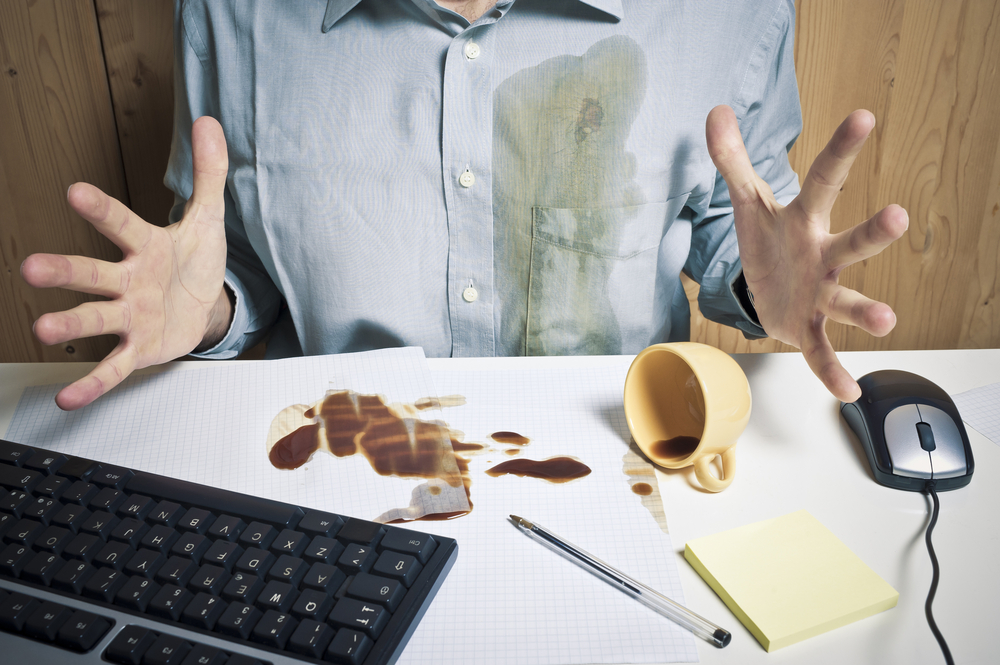
Stains happen. It’s a fact of life. If you eat food, drink fluids and eat food it’s going to happen eventually. And while you can never really stop stains from happening to your clothes, there are a few things you can do to help get rid of them. And you can use things you have right around the house.
What you use to remove a stain and how you use it depends on many factors, including the type of food or drink stain and the type of fabric you’ve stained. Cotton reacts well to soaking, detergents and light acids like vinegar and lemon juice. Wool, on the other hand, requires a gentler touch than cotton, and can be damaged by harsh detergents or acids. It’s better to use a wool-specific detergent and employ the help of a dry-cleaning service. Silk is very delicate and is prone to spotting if you focus too much water or scrubbing to a specific area, while synthetics can be vigorously scrubbed, but can be damaged by bleaches.
When it comes to stain-removing applications, you can use over-the-counter stain removal products, but there are also a lot of great options that you likely have at your disposal. Water is the safest to use – it’s pretty much the universal first step in destroying stains. But it usually needs to be paired with something else to be effective. Salt is great to soak up stains out of fabric once the stain has been soaked – it works great for red wine or blood stains. Acidic things like vinegar and lemon juice do wonders for coffee, tea and grass stains, and can help remove that musty mildew smell. Vinegar can also be paired with baking soda to create a paste perfect for scrubbing away stains. And don’t forget laundry detergent – use it as a concentrated scrub on a stain and let it sit for a bit before putting clothes through the wash. Dish detergent is also a great option for grease stains, but can be harsh on more delicate fabrics.
The first, universal rule to fight any stain is not to let the stain set. If a stain has a chance to bond to the fabric it becomes much more difficult to remove. When a stain hits, dilute it immediately with water and avoid any heat or too much pressure, which can cause the stain to set. Once you run your clothing through the washing machine, inspect it thoroughly to ensure the stain is gone before putting it in the dryer. If it isn’t you may have to repeat the stain removal process several times before it’s ready to be dried. The dry heat of the dryer will set the stain and make it nearly impossible to remove.
Stains are a reality of enjoying life, but they don’t have to be a death sentence for your wardrobe. With a little quick and deliberate thinking, you can give your favourite shirt a fighting chance next time you take on all-you-can-eat ribs night.


